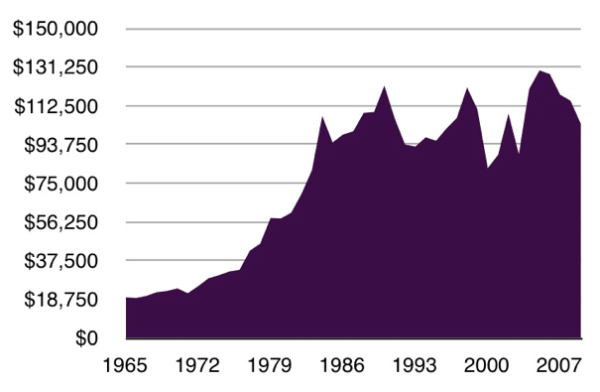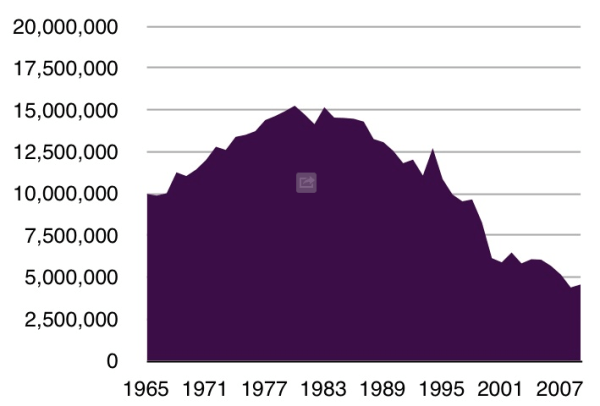As the president of an internet marketing company, I’m not a big fan of many “traditional” advertising strategies. In fact, I think John Wannamaker was smoking crack, or whatever they had back then, when he hypothesized that half his advertising was a waste. The reality is, he was probably wasting more like 70-80 percent of his money. If you don’t accurately track it, you’ll never know how much money you’re wasting! (Wannamaker gets a pass, though—he didn’t have call tracking, analytics, etc.)
Now, it’s not that I don’t believe in the power of traditional marketing. I do … sort of.
The other day, I was driving home from Blue Corona, which is about 40 minutes from my house in Silver Spring, MD. En route, I was attacked by a traditional marketing campaign created by one of my clients! In this case, my client is a plumbing company that, up until recently, only serviced the Baltimore, MD, area. Living in Silver Spring, a suburb of Washington, DC, I’d never heard of them until they inquired about Blue Corona’s services. This year, they’ve expanded their service area to include Washington, DC, and the surrounding parts of Montgomery County, MD (which includes Silver Spring), and Northern VA.
Back to the story …
So, I’m driving home and I see one of their wrapped service trucks. Impression number one. Two minutes later, I hit a red light and I’m stopped long enough to notice the client’s bus kiosk ad across the street. Impression number two. About a minute later, while I’m tapping my fingers feverishly on the steering wheel to “Baba O’Riley,” a Ride On Metrobus covered with the same client’s ads drives through the intersection directly in front of me! Impression number three. AND I’m on the phone with my wife listening to how our toilet won’t flush!
I know what you’re thinking … it’s a crazy life I lead.
Maybe I see my client’s traditional ads everywhere because they’re my client, but I don’t think that’s it. If you live in Montgomery County, MD, you’d never heard of the plumbing company in the story above a year ago, but I’ll bet their name is familiar to you today, and it’s a direct result of their media blitz.
Traditional advertising can also boost online marketing performance.
Take pay per click (PPC) as an example. It’s a pretty standard PPC best practice for improving ad click-through rate (CTR) to include the keyword searched in your ad’s headline. Makes sense … Someone who Googles “Baltimore plumber” is going to see the ad that has “Baltimore plumber” as more relevant than “Ben’s Plumbing Company”—which may or may not serve Baltimore (there are so many unsophisticated companies running PPC campaigns that it’s not uncommon to find companies advertising for keywords irrelevant to their business).
I’ve seen PPC tests with hundreds of campaigns from small ($1 million to $5 million) home service companies that show that keyword-rich headings generate higher CTRs than brand-centric headings. Again, this makes sense because most of these small companies don’t have much brand recognition. However, for companies that invest heavily in traditional advertising, the opposite is true. Well-branded companies see higher CTRs for ads featuring their company name—even when the keyword searched is decidedly generic.
Connecting traditional advertising impressions with revenue dollars (at least, in my experience it has been), but some tests show that traditional advertising may boost online marketing performance by increasing CTRs for various types of online ads.
When a company is investing heavily in traditional advertising, it doesn’t take long before you become familiar with their name (the advertising gurus say it takes 7 impressions for people to become aware of your brand). With familiarity comes trust and with trust comes confidence. Familiarity, trust, and confidence win home service companies more jobs. I know that familiarity, trust, and confidence influence my buying decisions.
Recently, a big thunderstorm swept through the DC suburbs (a “derecho” for you storm chasers). The violent winds took down a ~60-foot tree in my backyard. In the wake of the storm, tree guys roamed the neighborhoods looking for victims work. Each night when I’d arrive home from work, my wife would have 2-3 quotes to show me. Some of the quotes might as well have been written on a napkin in crayon.
Do you think we stroked a deposit check to any of those guys? Uh … negative.
We waited until the storm chasing contractors had left town and then brought a few companies out to bid on the job. The one we hired had a wrapped truck, business cards, a decent website, insurance, etc. Could we have gotten the job done for cheaper? Surely, but I’m a big believer in the saying, “price, quality, speed—pick two.” The company we hired doesn’t advertise (heavily) on TV, but they’ve been around since I was a kid (I could probably draw one of their trucks—logo, saying, and all—pretty easily from memory).
I know traditional advertising can work, but at what cost?
Two things trouble me about traditional advertising, and have led me to focus on helping companies get more leads and sales using inbound online marketing:
- Traditional advertising is difficult to track/quantify
- The pricing doesn’t make sense to me
Just look at this:

What you’re looking at in the screenshot above is advertising cost trends over time.
I couldn’t find an image showing the pricing trends through 2012 (admission: I didn’t look very hard), but I did find this quote:
“According to analysis by New York independent media agency TargetCast tcm, the average price of a 30-second spot in the first quarter of 2011 was $108,956, up 5 percent from the year-ago period. The percentage increase translates to an average hike of $5,000 per ad.”
Now look at this:

What you’re looking at in the graph above is the average number of minutes that a household spends watching in prime time.
So, the price is going up, but the amount of time people spend watching is going down …
How does that work, exactly??
I’ve only had the privilege of tracking a few TV campaigns, but in each case, the results were the same: dismal. (Metrics we used to evaluate success included: sales lift, # branded searches, web traffic from branded terms, etc.) The media market has been split into a million pieces. I used to have 30 TV channels, then I had 200, and now I have over 1,000. I used to read one newspaper (sometimes), now I rarely read the news and I get my information from hundreds of RSS feeds and a variety of filters. While I’m probably too digital-centric to be the “norm,” I see huge changes in the way my parents consume media (and they’re in their 60s).
I’m pretty sure that the viewership of every major channel is down. And yet the cost is up? To me, it doesn’t make a whole lot of sense. So, while I believe that traditional advertising and marketing can work, I think it’s over-priced.
If I owned a home service business, I only pour my money into traditional advertising if I:
- Were already “all in” with every other direct response channel and
- Had (a lot of) extra money to burn and
- Had a very long-term perspective on marketing and
- Already owned an amazing beach house
How do you value traditional advertising? How do you track success? Why are you so hard on your evaluation of your online marketing strategies while giving a big fat hall pass to your TV spots?
If it were me, I’d only invest in traditional advertising channels if the aforementioned conditions were true, and I’d track everything. Even if a marketing strategy isn’t a “direct response” channel, it would still be interesting to see metrics like “cost per lead,” “cost per sale,” and ROAS for every advertising strategy. Better data = better results.











